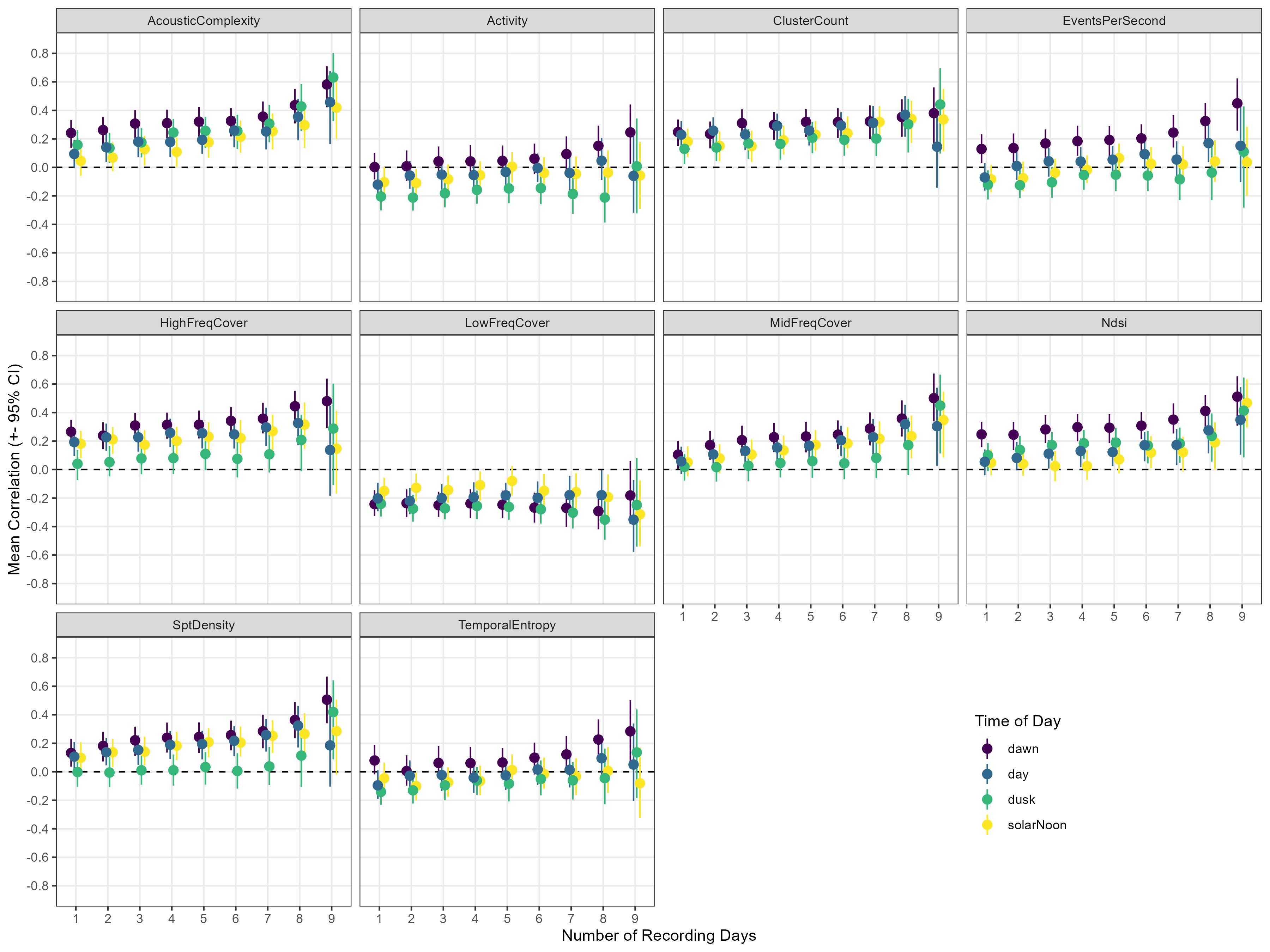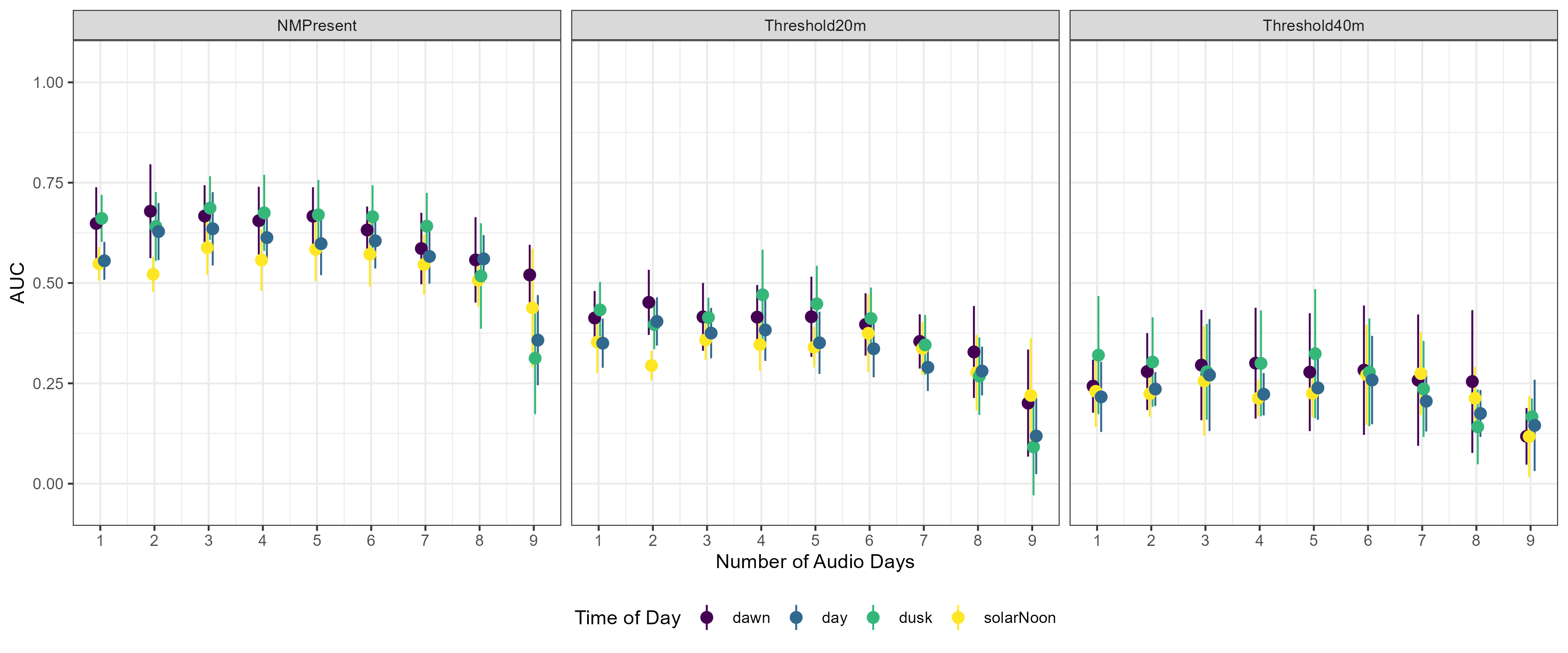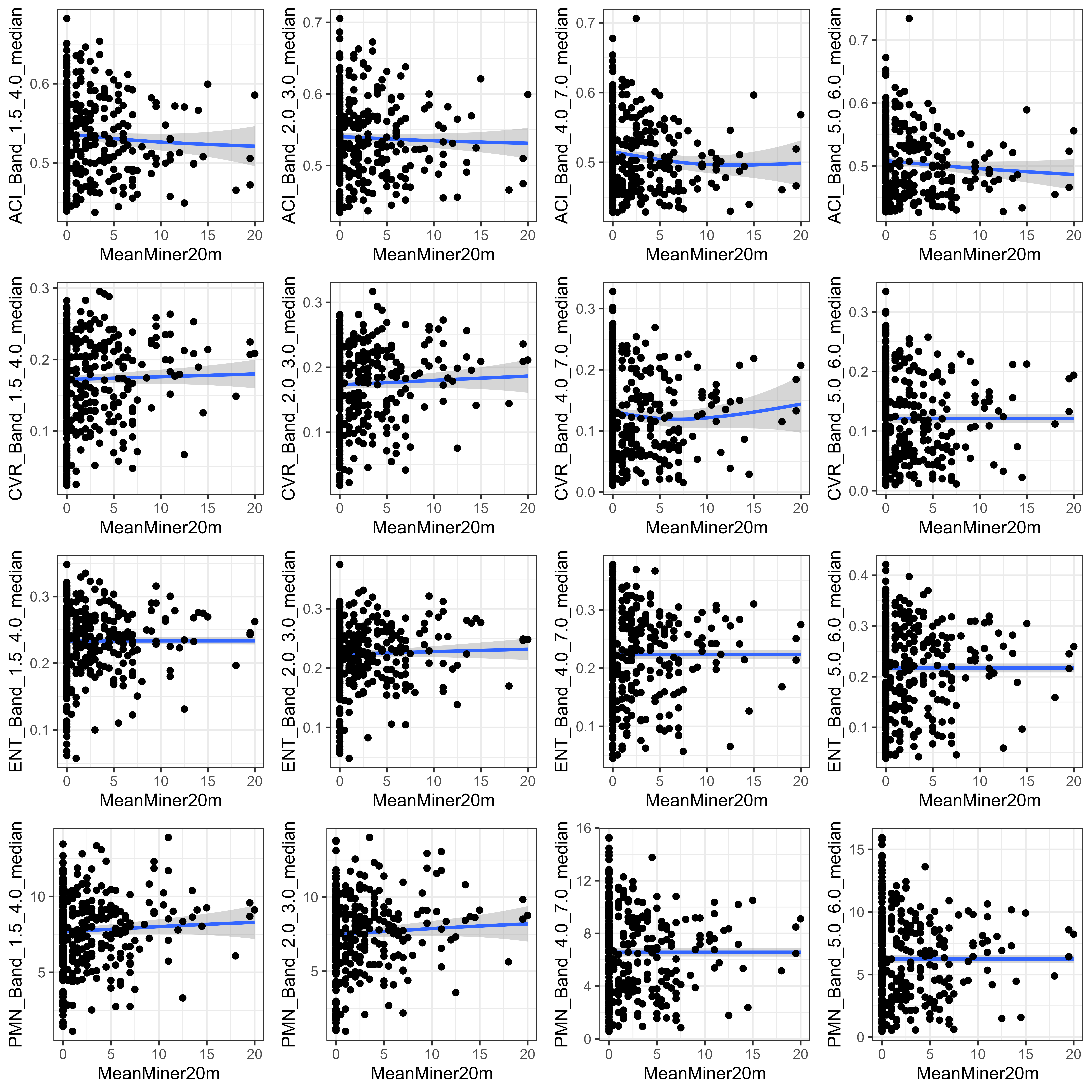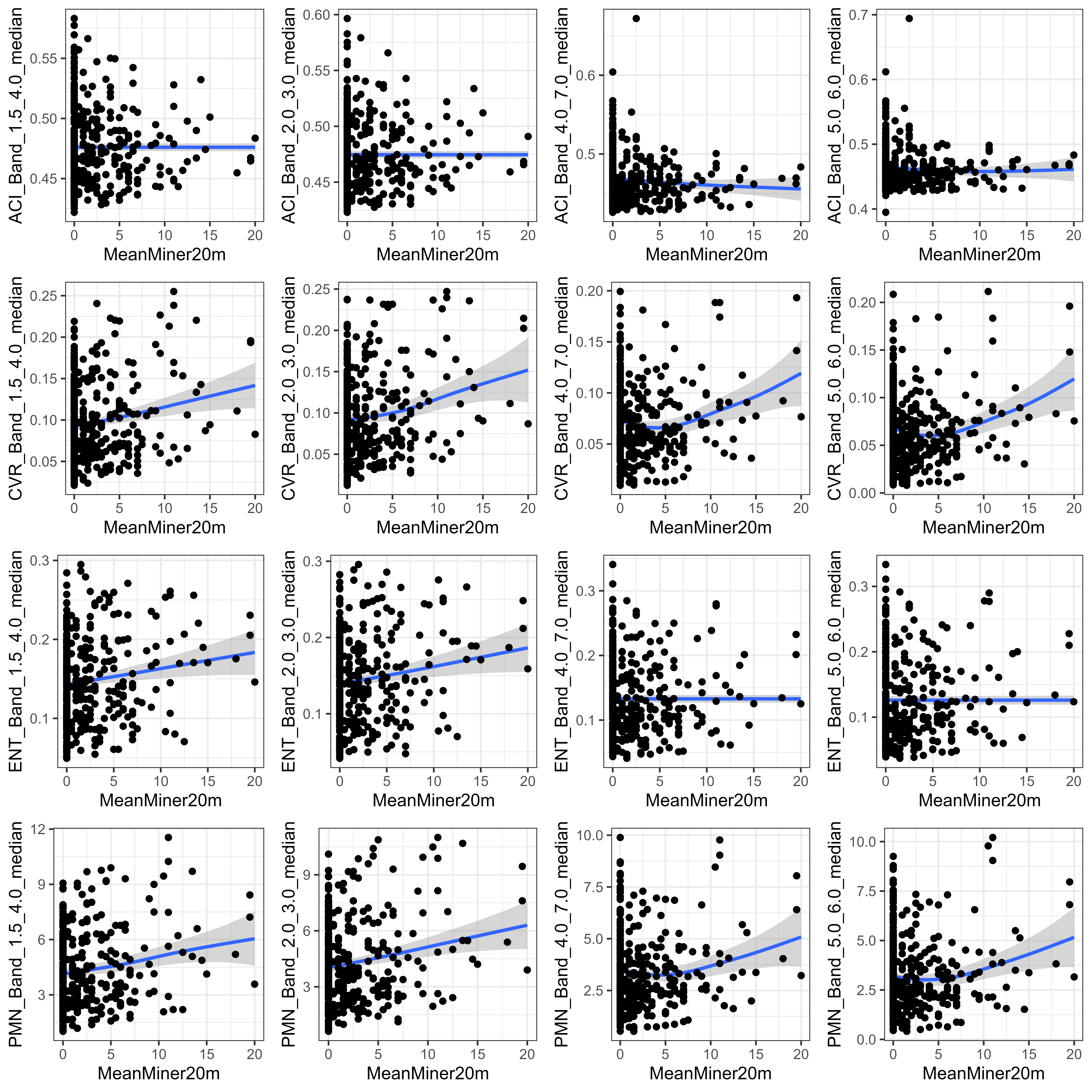Estimating Noisy miner presence and woodland bird diviersity using acoustic indices
Audio recordings were collected from 50 sites in 9 regions from November 2019 until February 2022.
A total of xxx minutes of audio were analysed.
Bird surveys were conducted on two seperate occassions during each sampling trip, and the following biodiversity metrics were calculated for the entire bird community and just Noisy miners.
| Biodiversity metric | Definition |
|---|---|
| Total Bird Diversity | |
| Detected20 | Number of species detected in 20 minute surveys |
| Detected40 | Number of species detected in 40 minute surveys |
| Mean20m | Number of individuals detected in 20 minute surveys |
| Mean40m | Number of individuals detected in 40 minute surveys |
| Noisy Miner Diversity | |
| NMPresent | Whether Noisy miners were detected during either of the two replicate surveys |
| Threshold20m | Whether Noisy miners were present in numbers above a threshold (2.4 individuals) |
| Threshold40m | Whether Noisy miners were present in numbers above a threshold (7 individuals) |
| MeanMiner20m | The mean number of Noisy miners detected during 20 minute surveys |
| MeanMiner40m | The mean number of Noisy miners detected during 40 minute surveys |
Acoustic indices were generated for all recordings at a 1-minute temporal resolution using a combination of QUT's Analysis Programs (https://github.com/QutEcoacoustics/audio-analysis) and R (packages: seewave & soundecology). Recordings were processed on JCU's HPC by downloading files from UNE's Owncloud storage and ussing the following shell script:
This shell script looped over all recordings contained in a recording list scraped from UNE's Owncloud and generated Acoustic Indices using QUT's AP software and called the following R script to generate indices that were not available in AP.
The following table outlines all the acoustic indices that were generated directly from the audio recordings:
| Acoustic Index | Defition, packages, settings etc. |
|---|---|
| QUT Analysis Programs Indices | |
| Activity (ACT) | The fraction of values in the noise-reduced decibel envelope that exceed the threshold, θ = 3 dB. |
| EventsPerSecond (ENV) | A measure of the number of acoustic events per second, averaged over the same noise-reduced one-minute segment. An acoustic event is defined as starting when the decibel envelope crosses a threshold, θ, from below to above, where θ = 3 dB. |
| LowFreqCover (LFC) | The fraction of noise-reduced spectrogram cells that exceed 3 dB in the low-frequency band (1-1000 Hz). |
| MidFreqCover (MFC) | As for LFC but in the mid-frequency band (1000-8000 Hz). |
| HighFreqCover (HFC) | As for LFC but in the high-frequency band (8000–11025 Hz). |
| AcousticComplexity (ACI) | A measure of the relative change in acoustic intensity in each frequency bin. |
| TemporalEntropy (ENT) | Entropy of the energy (squared amplitude) values of the signal waveform. |
| ClusterCount (CLS) | The number of distinct spectral clusters in the mid-frequency band of a one-minute segment of recording. |
| Ndsi (NDSI) | NDSI aims at estimating the level of anthropogenic disturbance on the soundscape by computing the ratio of human-generated (anthropophony) to biological (biophony) acoustic components |
| SptDensity (SPD) | A measure of the number of cells in the mid-frequency band of a one-minute spectrogram that are identified as being local maxima. |
| R Indices | |
| Acoustic Complexity Index (ACI) | Generated using the soundecology package. Settings: min_freq = 0, max_freq = 11025 |
| Acoustic Diveristy Index (ADI) | Generated using the soundecology package. Settings: max_freq = 10000, freq_step = 1000 |
| Acoustic Evenness Index (AEI) | Generated using the soundecology package. Settings: max_freq = 10000, freq_step = 1000 |
| Normalised (NDSI) | Generated using the soundecology package. Default values used: anthro_min = 1000, anthro_max = 2000, bio_min = 2000, bio_max = 11000 |
| Normalised (NDSI_bio) | Biophony component of NDSI (i.e., 2-11kHz) |
| Normalised (NDSI_anthro) | Anthropophony component of NDSI (i.e., 1-2kHz) |
| M | Median of the amplitude envelope seewave |
| H | Total entropy seewave |
| Ht | Temporal entropy seewave |
| Hf | Spectral entropy seewave |
| BI | Bioacoustic index soundecology |
We calculated custom acoustic indices for specific frequency bands in an attempt to tailor them for predicting the presence and number of Noisy miners. These indices were derived by aggegrating (using mean) the 43.1Hz spectral indices for the appropriate frequency range.
We aggregated QUT's spectral indices (ACI, CVR, ENT, and PMN) at the following bands:
- 1.5kHz - 4.0kHz
- 2.0kHz - 3.0kHz
- 4.0kHz - 7.0kHz
- 5.0kHz - 6.0kHz
In addition to the spectral indices described above, we also derived a reduced set of spectral indices that may be useful for predicting either total bird biodiversity or Noisy miner presence. QUT's AP software outputs spectral indices at a 43.1Hz frequency resolution between 0 and 11025 Hz, resulting in a feature set of length 256 per spectral index. In order to reduce this large feature set to something more suitable for machine learning methods we aggregated spectral indices across the frequency range to reduce the length of each spectral index from 256 to 16. The image below illustrates the aggregation method used, based on the advice of Mike Towsey:
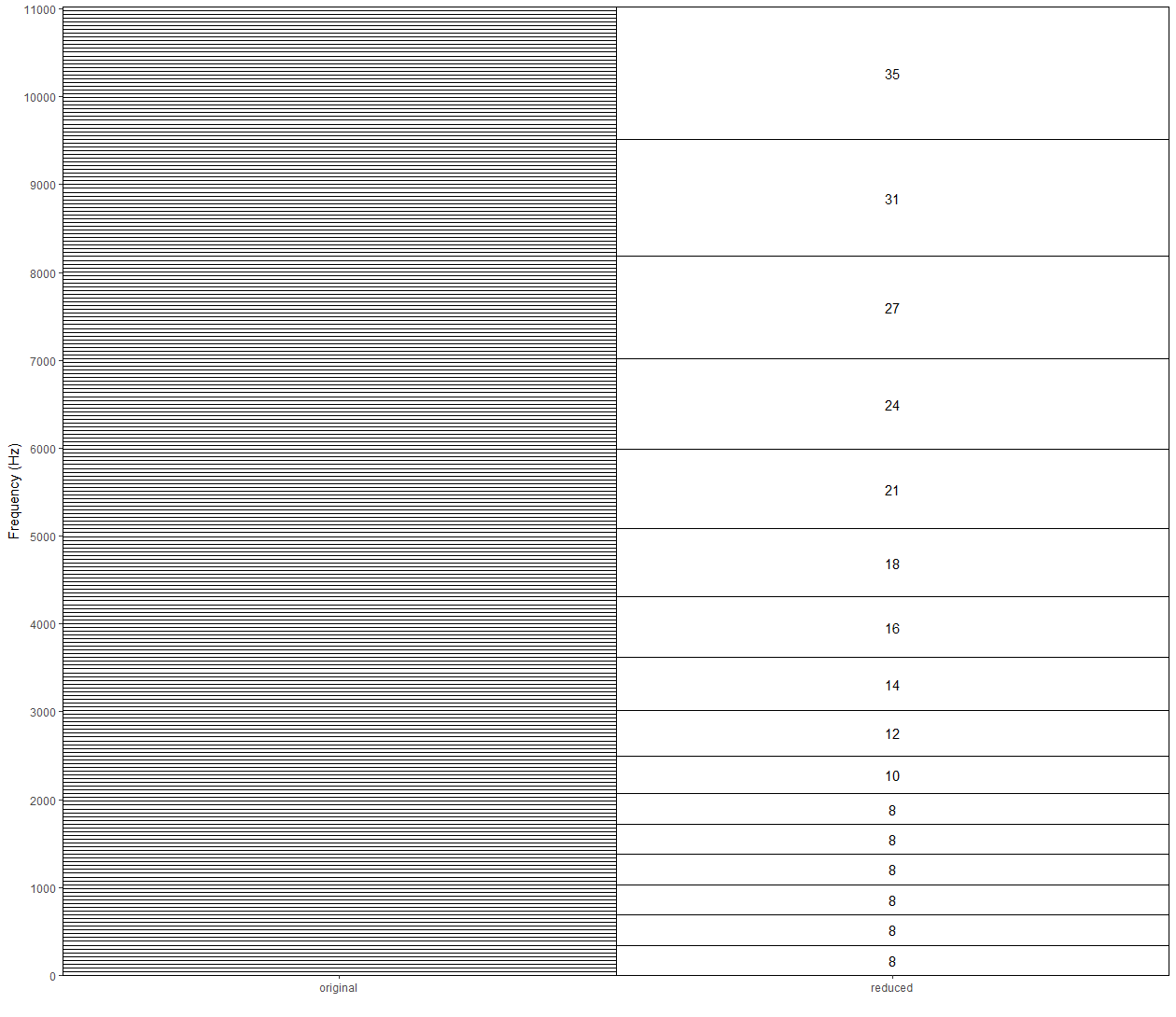 Figure X. Illustration of feature reduction technique used for spectral indices. By default, 256 spectral indices are output at 43.1Hz resolution as shown on the left. After aggregating them using the sequence shown on the right, we are left with 16 spectral indices of varying frequency resolution.
Figure X. Illustration of feature reduction technique used for spectral indices. By default, 256 spectral indices are output at 43.1Hz resolution as shown on the left. After aggregating them using the sequence shown on the right, we are left with 16 spectral indices of varying frequency resolution.
An initial inspection of acoustic index values identified some extreme values, particularly for ACI. We removed these extreme values as they are likely due to an extreme sound event that does not reflect a change in call diversity. As we could check all the recordings individually for outlier events, we removed the bottom and top 0.5% of values for each acoustic index per site. Given our following aggregation of 1-minute acoustic index values into median values for different periods of the day, this removal represents only a tiny fraction of the overall data.
To investigate the effect of recording duration on the relationship between acoustic indices and total bird biodiversity and Noisy miner presence and abundance, acoustic indices were aggregated using between 1 and 9 days of audio recordings collected around the time of each survey period.
Days were selected at random from the available audio within 2 days either side of the two replicate bird survey dates, and aggregated by calculating the median value for the time periods specified below.
Note: Not all survey periods had a full 9 days of audio available within +- 2 days of the bird surveys, therefore sample size differs depending on the number of audio recording days considered.
Acoustic indices were aggregated into median values for four different time periods:
- "dawn" - 2 hour period from 30 mins before sunrise until 1.5 hours after sunrise
- "solarNoon" - 2 hour period from 1 hour before solar noon until 1 hour after solar noon
- "dusk" - 2 hour period from 1.5 hours before sunset until 30 mins after sunset
- "day" - variable time period between sunrise and sunset
Sunrise and sunset times for all survey dates were extracted using the suncalc package (see CalculateSunriseSunsetTimes.R)
Data were removed if less than 70% of audio was available for the respective time period.
In general, acoustic indices had relatively low correlation scores (0-0.4) with bird biodiversity
Figure X. Bootstrap spearman correlation estimates of individual acoustic indices and bird biodiversity (Species Diversity 20 minutes) across different numbers of audio recording days.
Note: The above figure is for the indices generated using QUTs AP software. There are similar plots for indices created using R and for other biodiversity measures here
Using the spectral indices calculated at specific bands to detect Noisy miner presence, there seems to be some evidence that ACI and CVR (occasionally ENT and PMN too) are lower in the 4kHz-7kHz band when Noisy miners are present (during dawn and dusk). However, the effect sizes are small.
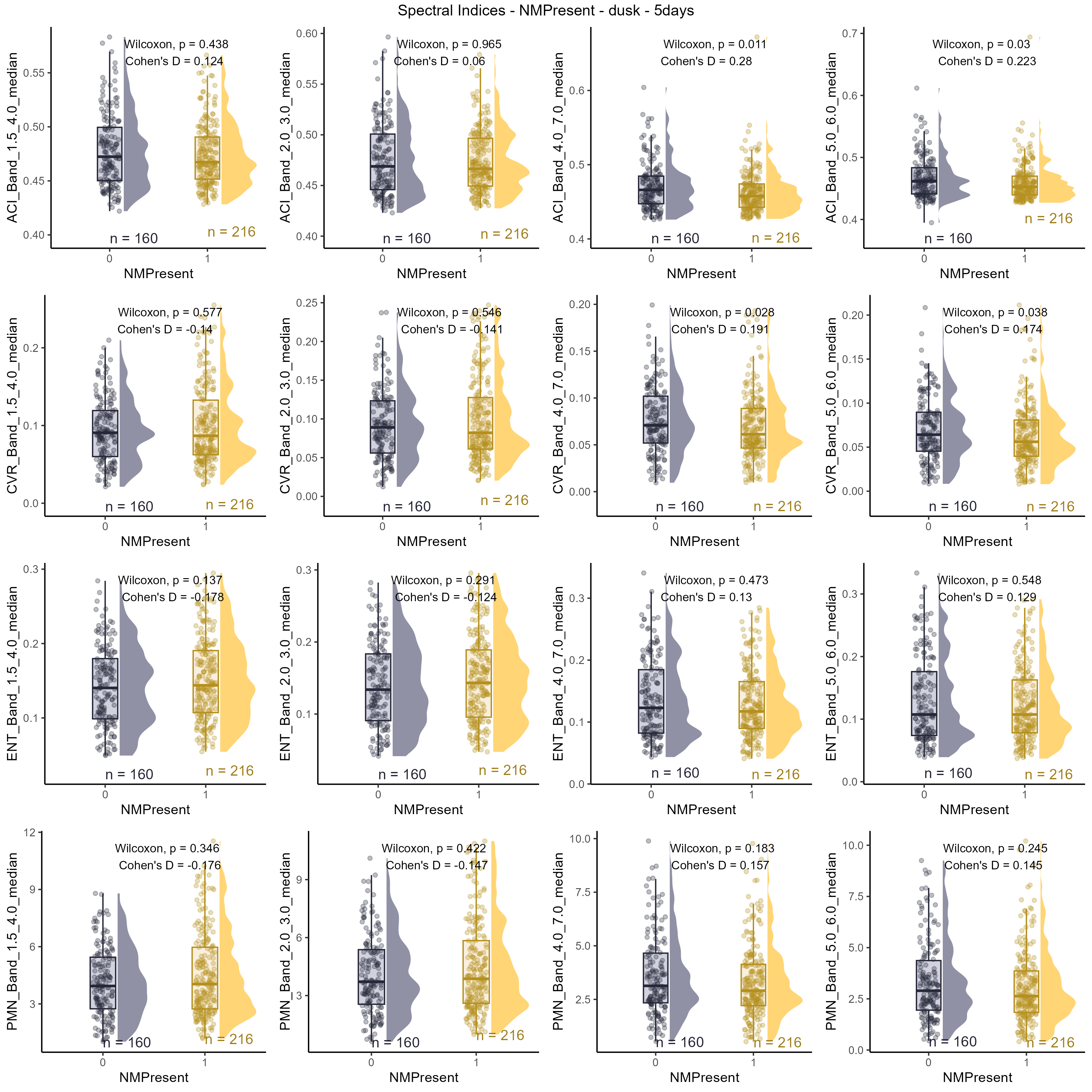 Figure X. Raincloud plots of Spectral Indices for Noisy miner presence (1) and absence (0) at dusk using 5 days of audio.
Figure X. Raincloud plots of Spectral Indices for Noisy miner presence (1) and absence (0) at dusk using 5 days of audio.
Using the summary indices, there appears to be some evidence that there are lower values of HFC and NDSI and higher values of LFC when Noisy miners are present. This was detected during both dawn and dusk periods (e.g. Figure 3). However, like above, effect sizes are small.
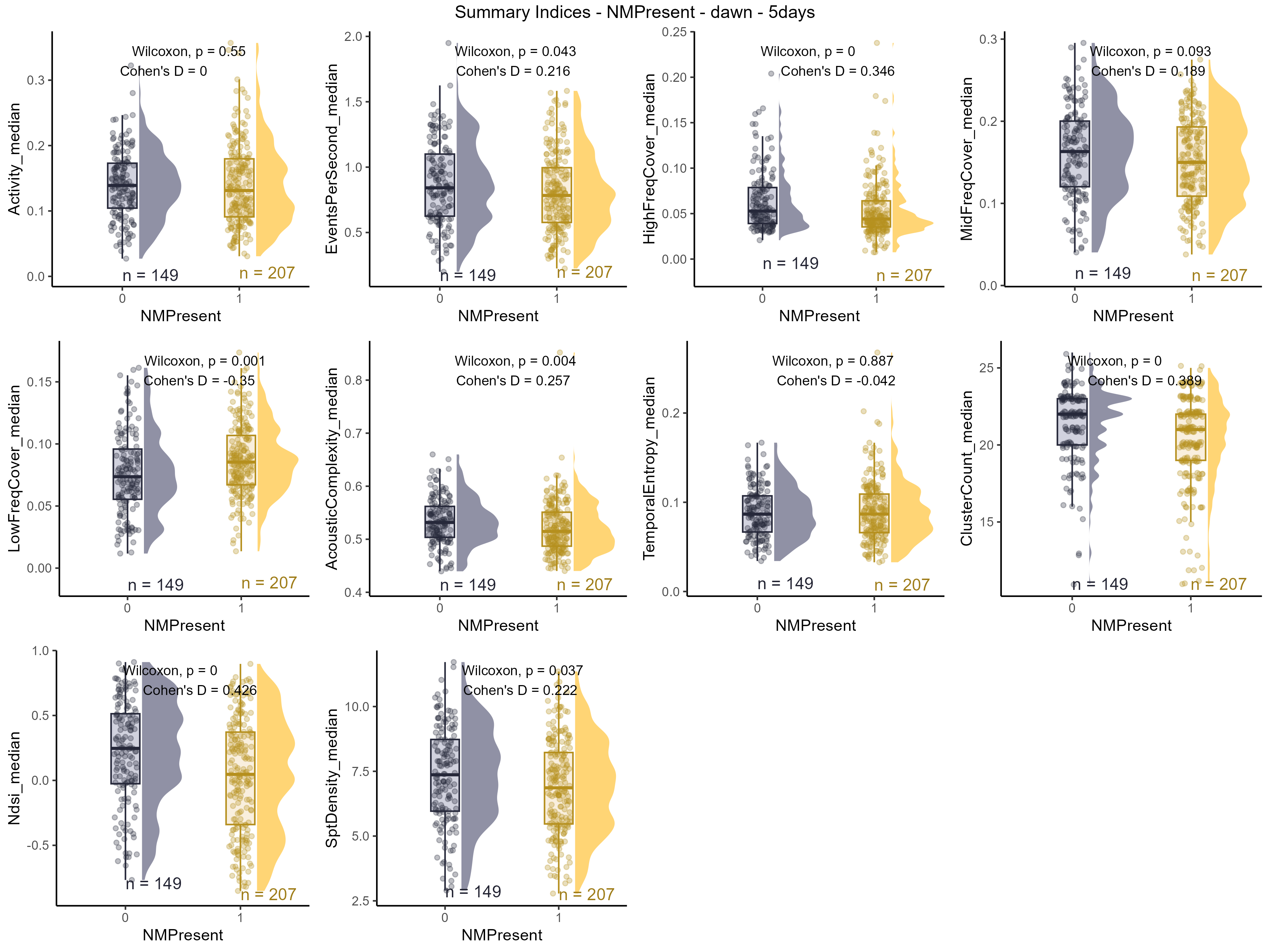 Figure 3. Raincloud plots of Summary Indices for Noisy miner presence (1) and absence (0) at dawn using 5 days of audio.
Figure 3. Raincloud plots of Summary Indices for Noisy miner presence (1) and absence (0) at dawn using 5 days of audio.
From the R indices, ADI, AEI, and NDSI (and its components), showed the strongest relationship with Noisy miner presence. The below figures is from the dawn period using 6 days of audio recordings.
 Figure 4. Raincloud plots of select R Indices for Noisy miner presence (1) and absence (0) at dawn using 6 days of audio.
Figure 4. Raincloud plots of select R Indices for Noisy miner presence (1) and absence (0) at dawn using 6 days of audio.
There was poor separation between Noisy miner presence variables using combinations of acoustic indices in a PCA at any time period (Figure 4).
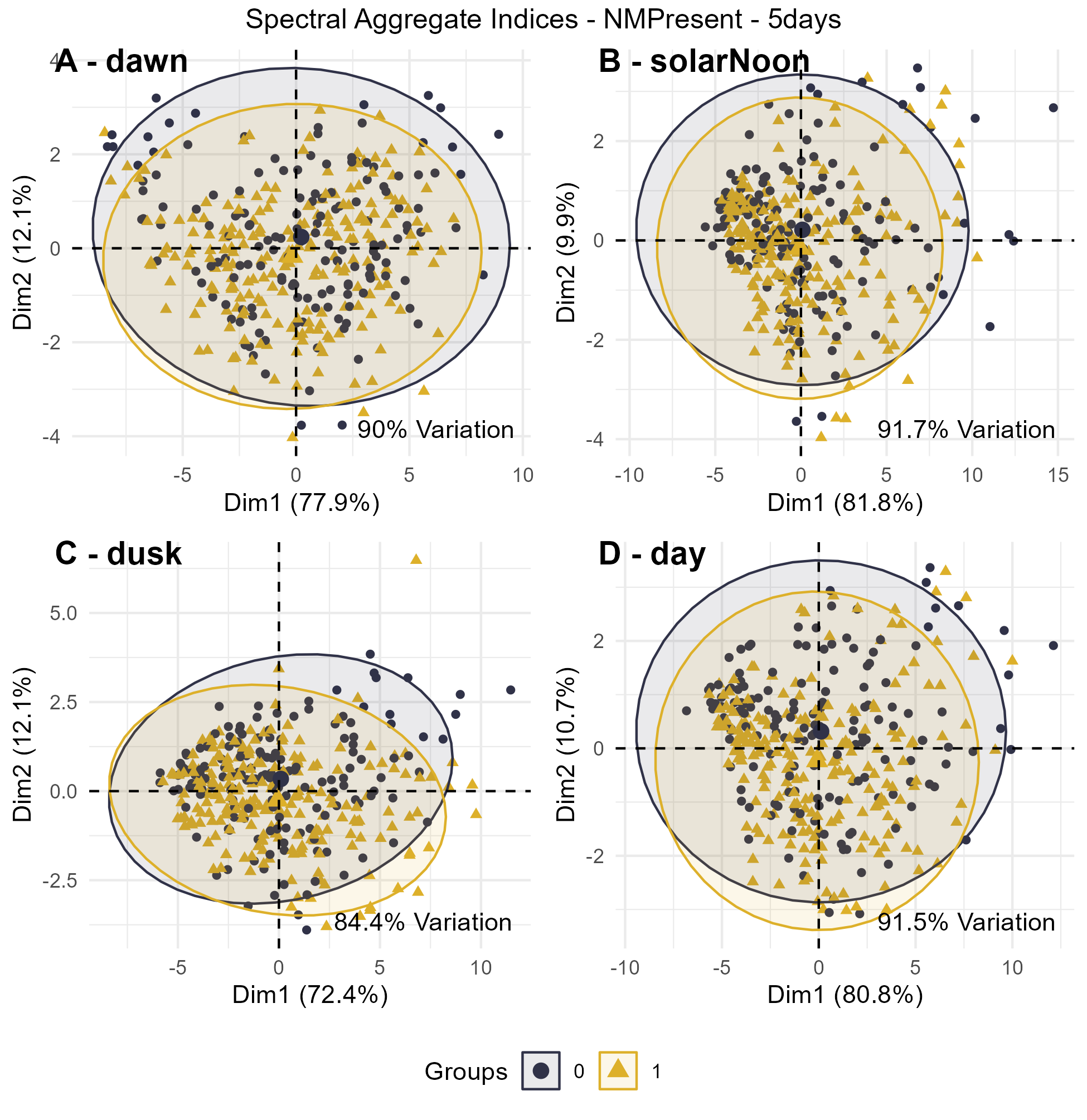 Figure 4. PCA plots for Spectral Indices and the 'NMPresent' response (A:'dawn', B:'solarNoon', C:'dusk', D:'day'). Spectral indices used were ACI, CVR, ENT and PMN aggregated at four frequency bands (1.5kHz-4.0kHz, 2.0kHz - 3.0kHz, 4.0kHz - 7.0kHz, and 5.0kHz - 6.0kHz).
Figure 4. PCA plots for Spectral Indices and the 'NMPresent' response (A:'dawn', B:'solarNoon', C:'dusk', D:'day'). Spectral indices used were ACI, CVR, ENT and PMN aggregated at four frequency bands (1.5kHz-4.0kHz, 2.0kHz - 3.0kHz, 4.0kHz - 7.0kHz, and 5.0kHz - 6.0kHz).
See outputs/figures_2023/pca for all PCA plots.
We used linear discriminant analysis to try to classify the Noisy miner presence variables (NMPresent, Threshold20m, and Threshold40m) using the principal components that explained at least 90% of the variance in the dataset.
Dawn
Dusk
